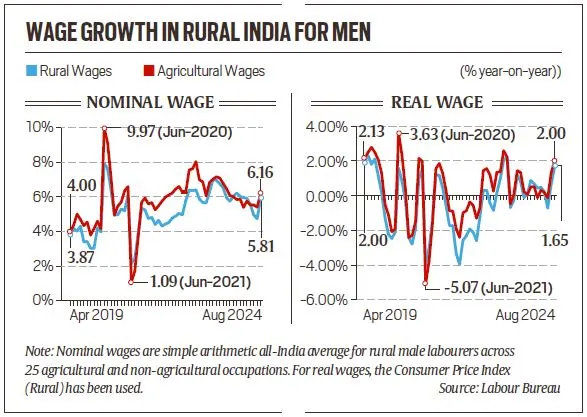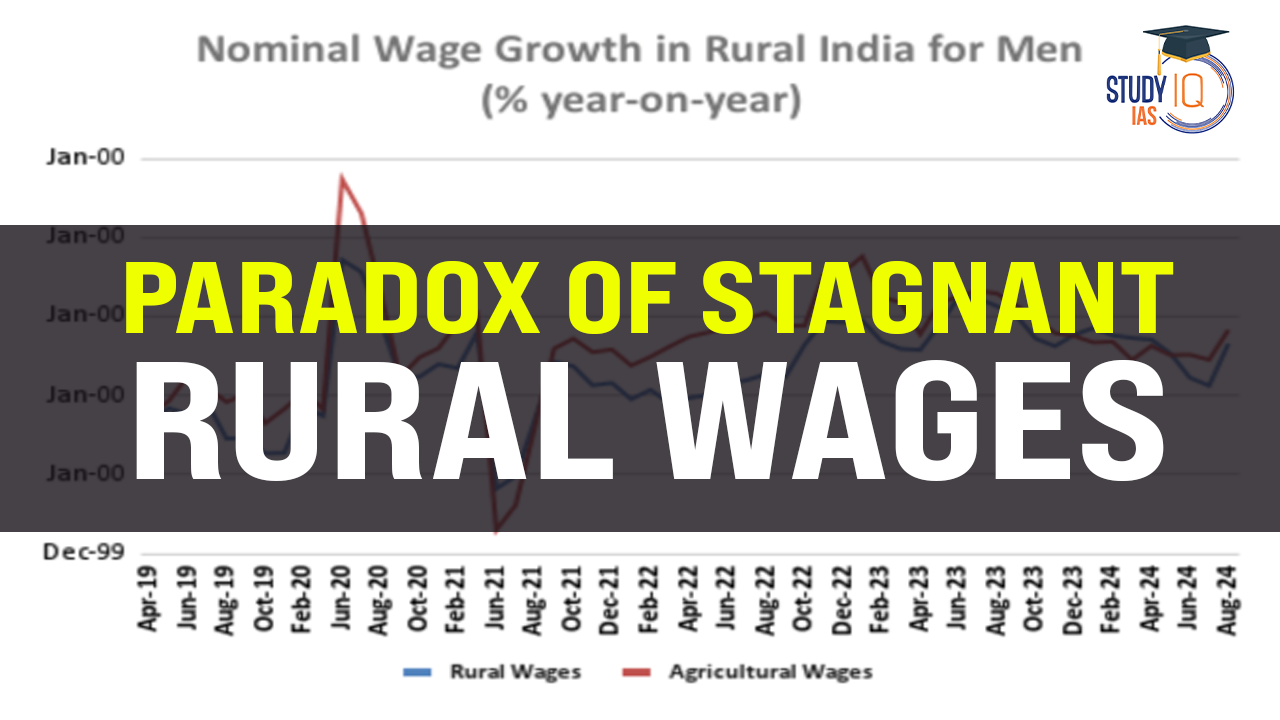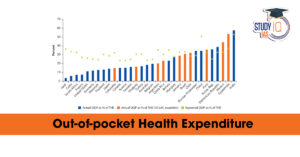Table of Contents
The Indian economy has experienced notable growth from 2019-20 to 2023-24, with an average annual rate of 4.6% and a more robust 7.8% in the last three fiscal years. However, this economic expansion has not translated into significant improvements in rural wages, leading to a paradoxical situation where real wages remain stagnant or even negative.
In News
- GDP Growth: The Indian economy grew at an average annual rate of 4.6% from 2019-20 to 2023-24, with a higher growth rate of 7.8% in the last three fiscal years.
- Agricultural Sector Growth: The farm sector’s growth averaged 4.2% during this period and 3.6% over the same five years.
Wage Growth Analysis

The Labour Bureau collects data on daily wage rates for various occupations across rural India:
- Nominal Wage Growth:
- Average nominal year-on-year growth in rural wages was 5.2% for the five years ending in 2023-24.
- Agricultural wages saw a slightly higher growth at 5.8%.
- Real Wage Growth:
- In real terms (adjusted for inflation), average annual growth was -0.4% for rural wages and 0.2% for agricultural wages during the same period.
- For the current fiscal year (April-August), overall rural wages increased by 5.4% nominally and only 0.5% in real terms, while agricultural wages rose by 5.7% nominally and 0.7% in real terms.
The Paradox of Stagnant Wages
- Rising Labor Force Participation Rates (LFPR): One explanation for stagnant real wages is the increase in Labor Force Participation Rates (LFPR), particularly among women:
- The all-India average female LFPR rose from 24.5% in 2018-19 to 41.7% in 2023-24.
- Rural female LFPR specifically increased from 26.4% to 47.6% over the same period.
- This rise is attributed to government initiatives such as:
- Ujjwala (clean cooking fuel)
- Har Ghar Jal (piped drinking water)
- Saubhagya (electricity access)
- Swachh Bharat (sanitation)
- These programs have reduced the time women spend on household chores, enabling them to seek employment outside the home.
- Increased Labor Supply and Its Impact: The influx of women into the workforce has led to a rightward shift in the labour supply curve, increasing competition for jobs and exerting downward pressure on real wages.
- Shift in Employment Patterns: Despite more women entering the labour force, a significant portion remains employed in agriculture:
- Agriculture’s share of employment increased from 71.1% to 76.9%, indicating that new entrants are primarily finding work in low-productivity agricultural jobs rather than higher-paying non-farm sectors.
- Demand-Side Factors: The nature of economic growth has also contributed to stagnant wages:
- Economic growth has become increasingly capital-intensive and labour-saving, resulting in fewer workers needed per unit of output.
- This trend leads to a greater share of income accruing to capital rather than labour, further suppressing wage growth.
Mitigating Factors
While stagnant wages present challenges, various income transfer schemes have been implemented to provide financial support:
- States such as Andhra Pradesh, West Bengal, and Tamil Nadu have introduced schemes targeting women, with total annual payments estimated at around ₹2 lakh crore.
- The central government also offers a ₹6,000 annual income transfer to approximately 11 crore farmer households.
- g., Maharashtra’s Ladki Bahin Yojana provides ₹1,500 per month to eligible women, which is significant compared to the average daily wage of ₹311.5 for rural female labourers engaged in agriculture.
Conclusion
Despite robust GDP growth and improvements in agricultural productivity, real rural wages remain stagnant due to increased labour supply and shifts in employment patterns towards low-paying agricultural jobs. The government’s income transfer schemes offer some relief but highlight the need for comprehensive strategies to enhance wage growth and improve living standards in rural India.


 Out-of-Pocket Health Expenditure, Reason...
Out-of-Pocket Health Expenditure, Reason...
 Treasury Bills (T-bills): RBI Cuts Holdi...
Treasury Bills (T-bills): RBI Cuts Holdi...
 Fisheries Sector in India, Current Statu...
Fisheries Sector in India, Current Statu...

























